Understanding The Solar Plexus Chakra (Manipura)
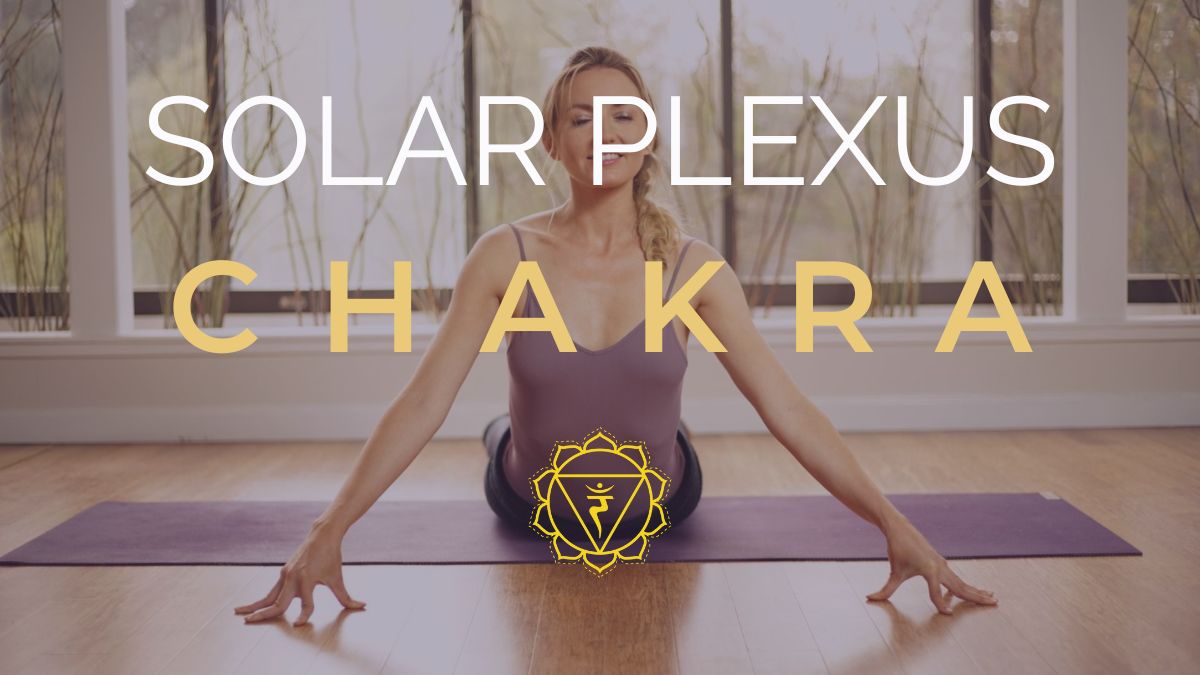
Today we’re discussing my dominant chakra! Yes — I sense the third chakra has the most energy in my body. (PS at the end of our exploration, I’ll gift you a free quiz so you can uncover your dominant chakra too). Located just above the muladhara chakra (base chakra) and svadisthana chakra (sacral chakra), and just below anahata chakra (heart chakra), your manipura chakra is a powerhouse in the truest sense of the word.
If you feel strong in this energy center, like me, you’re likely an ambitious workaholic. If you’re a procrastinator who wishes you had a little more energy, you’re in the right place. It’s time to start your manipura chakra journey, and below I have some chakra healing affirmations for you that will awaken your willpower and zest for life.
This article will give you an awesome idea of what’s in store for you if you tap into the chakra healing power of your solar plexus area.
Today, we will explore the benefits inherent power of Solar Plexus Chakra meditation and provide a step-by-step guide on how to practice it. We will also discuss the role of chanting to reverse negative thought patterns in the Solar Plexus Chakra and I’ll provide some helpful chants to use during your practice. Whether you’re new to meditation or a seasoned practitioner, a Solar Plexus Chakra meditation can be a powerful tool for promoting balance, healing, and physical body transformation and your life. Scroll down for mine.
What is the Solar Plexus Chakra?
The solar plexus chakra, also known as the third chakra or Manipura in Sanskrit, is one of the seven primary energy centers in the human body. It is located at the upper abdomen, above the belly button and below the chest.
The solar plexus chakra is associated with personal power, confidence, self-esteem, and willpower. When this chakra is balanced and activated, it helps you feel self-assured and capable of achieving your goals. You feel calm and are able to assert yourself and make decisions with clarity and purpose.
On the other hand, when an underactive solar plexus chakra is blocked or unbalanced, individuals may experience low self-esteem, lack of control issues, of confidence, indecisiveness, and a feeling of being stuck or powerless. Physical symptoms associated with a blocked solar plexus chakra may include digestive issues, stomach ulcers, and other abdominal problems.
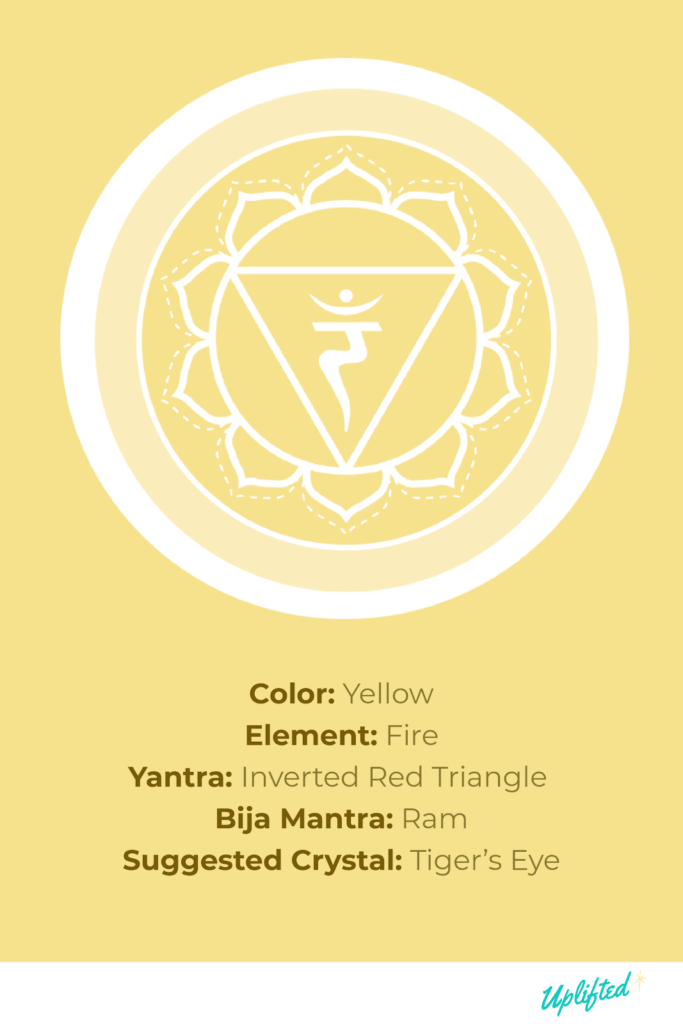
Take my chakra quiz to find your dominant chakra:
Is Third Chakra Really Important?
YES! Let me give you a deeper understanding. The Solar Plexus Chakra (the third chakra) is an important energy center in the human body for several reasons:
Personal Power
The third chakra is associated with personal power, confidence, and self-esteem. When this chakra is balanced and activated, individuals are able to assert themselves and make decisions with clarity and purpose. This helps them to achieve their goals and feel empowered in their lives.
Willpower
The solar plexus chakra is also associated with willpower and self-discipline. When this chakra is balanced, individuals are able to overcome obstacles and challenges with determination and perseverance.
Emotional Health
The third chakra or solar plexus chakra is also linked to emotional health. When this chakra is balanced, individuals are able to express their emotions in a healthy way, without feeling overwhelmed or out of control.
Physical Health
The solar plexus chakra is also associated with physical health, specifically the digestive system. When this chakra system is blocked or unbalanced, individuals may experience digestive issues such as stomach pain, bloating, or indigestion.
Overall, the third chakra aka solar plexus chakra is important because it plays a significant role in our sense of self, our ability to achieve our goals, and our physical and emotional well-being. When this chakra is balanced and activated, we are able to live our lives with confidence, purpose, and strong sense of vitality.
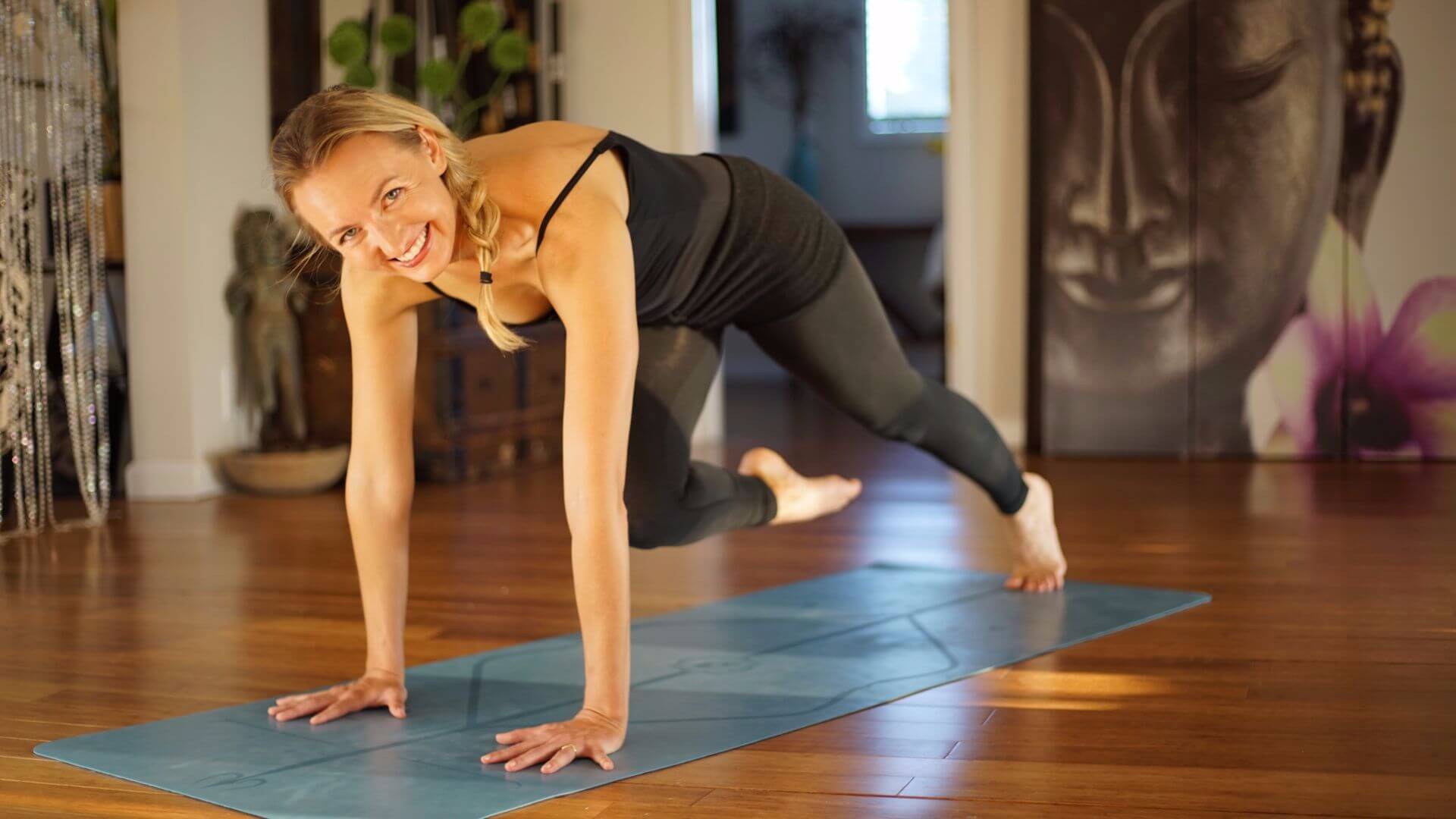
What does a Manipura Chakra Blockage Feel Like?
A blocked or unbalanced Solar Plexus Chakra (Manipura), can cause a variety of physical, emotional, and mental symptoms. You may feel powerless and unsure of yourself making you feel insecure and unable to assert your boundaries or speak up for yourself. You may experience frequent stomach aches, bloating, constipation, or other digestive problems. Feeling unmotivated, lacking in energy or drive, and unsure of what you want out of life is also a big part of it. You may experience frequent bouts of anger or irritability, and have difficulty controlling your temper. Also Inability to take action may arise and many great ideas and plans could go in vain and you may find it difficult to take action and make them a reality.
Overall, a blocked solar plexus chakra can make you feel stuck and powerless, as though you are unable to move forward or create positive change in your life. I often call this, “the victim mentality.” If you are experiencing these symptoms, it may be helpful to work on balancing and activating your Manipura chakra through practices such as meditation, yoga, or energy healing. And repeat positive affirmations! More on that in a minute.
Best Methods: Solar Plexus Chakra Healing
There are a few ways to heal the Solar Plexus Chakra. Here are my favorite ways to do it.
Chakra Yoga
Here’s a bit of happy news for the manipura junkies out there: most yoga classes taught in the West already have an embedded focus on solar plexus chakra, whether intended or not.
Why?
Because sweat sells.
It probably won’t surprise you to learn that yoga studio owners find it easier to fill core-strengthening, bikini-season-ready, sweaty hot vinyasa flow classes than something like, say, silent meditation.
While this unavoidable truth has its ups and downs, it does mean one thing: you won’t have to search long and hard for a yoga practice that activates your Solar Plexus Chakra. Here are some of the best Solar Plexus Chakra Yoga Poses for you. Or simply do a full manipura kundalini chakra class with me here (warning, your belly will burn 🙂
Yoga Pose 1. Supine Breath Work
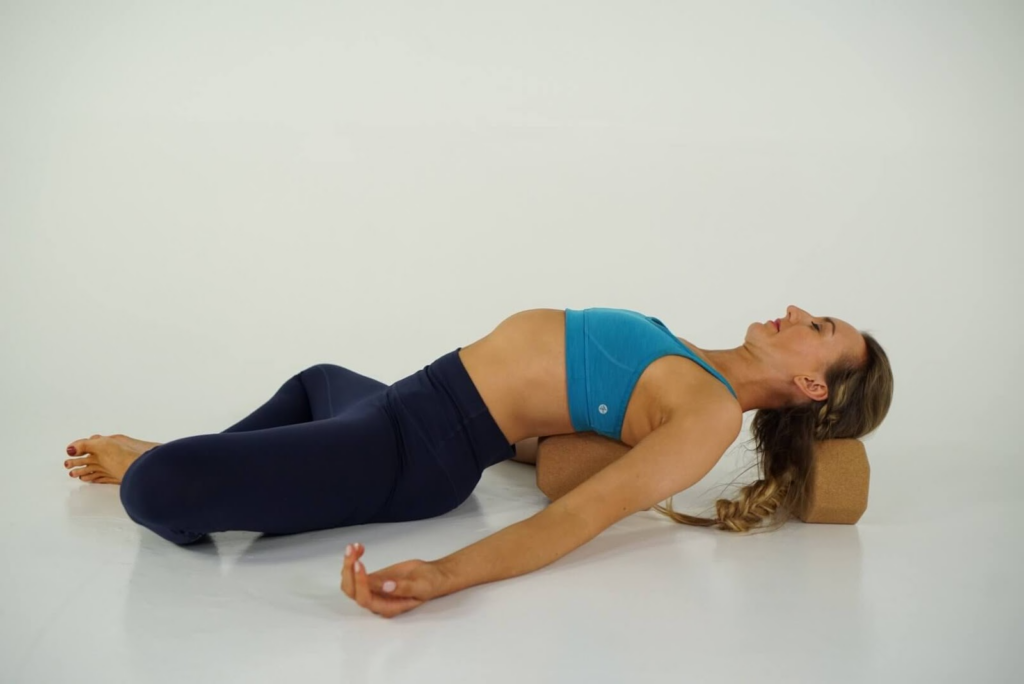
- Lie down on your back on a comfortable surface such as a yoga mat or blanket. Make sure you are warm and comfortable, and that your body is fully supported by the surface beneath you.
- Stretch your legs out straight and allow your feet to fall open slightly. Your arms should be resting comfortably at your sides with your palms facing up.
- Close your eyes and take a few deep breaths, inhaling through your nose and exhaling through your mouth. Allow your breath to slow down and become more natural.
- Begin to focus on your breath, noticing the sensation of the air moving in and out of your body. Try to breathe deeply into your belly, allowing it to expand fully with each inhale.
- As you exhale, allow your body to relax even further into the surface beneath you. Imagine that you are sinking deeper and deeper into a state of complete relaxation.
- If your mind begins to wander, gently bring your focus back to your breath. Allow any thoughts or distractions to simply pass by without getting caught up in them.
- Stay in this pose for several minutes, or as long as it feels comfortable for you. When you are ready to come out of the pose, take a few deep breaths and slowly begin to wiggle your fingers and toes. Roll onto your side and rest for a moment before slowly sitting up.
Remember to practice this Supine Breath Work with patience and mindfulness. It can be a powerful tool for reducing stress and promoting relaxation, but it may take time and practice to fully experience its benefits to the digestive system and nervous system.
Yoga Pose 2. Boat Pose (Navasana)
Boat pose, also known as Navasana, is a challenging yoga posture that strengthens the core, hips, and spine. Here’s how to practice boat pose:
- Begin by sitting on your yoga mat with your knees bent and feet flat on the floor. Keep your spine straight and your shoulders relaxed.
- Lift your feet off the ground, bringing your shins parallel to the floor. This is a half boat pose.
- Reach your arms forward, parallel to the floor, palms facing down.
- Begin to straighten your legs, slowly raising them to a 45-degree angle from the floor. At the same time, lift your upper body and bring your arms forward, reaching towards your toes.
- Balance on your sitting bones, engaging your core muscles and lengthening through your spine.
- If possible, straighten your legs fully, creating a “V” shape with your body.
- Hold the pose for several breaths, maintaining your balance and focusing on your breath.
- To release, exhale and slowly lower your legs and upper body back down to the mat.
Yoga Pose 3. Half Lord of the Fishes Pose(Ardha Matsyendrasana)
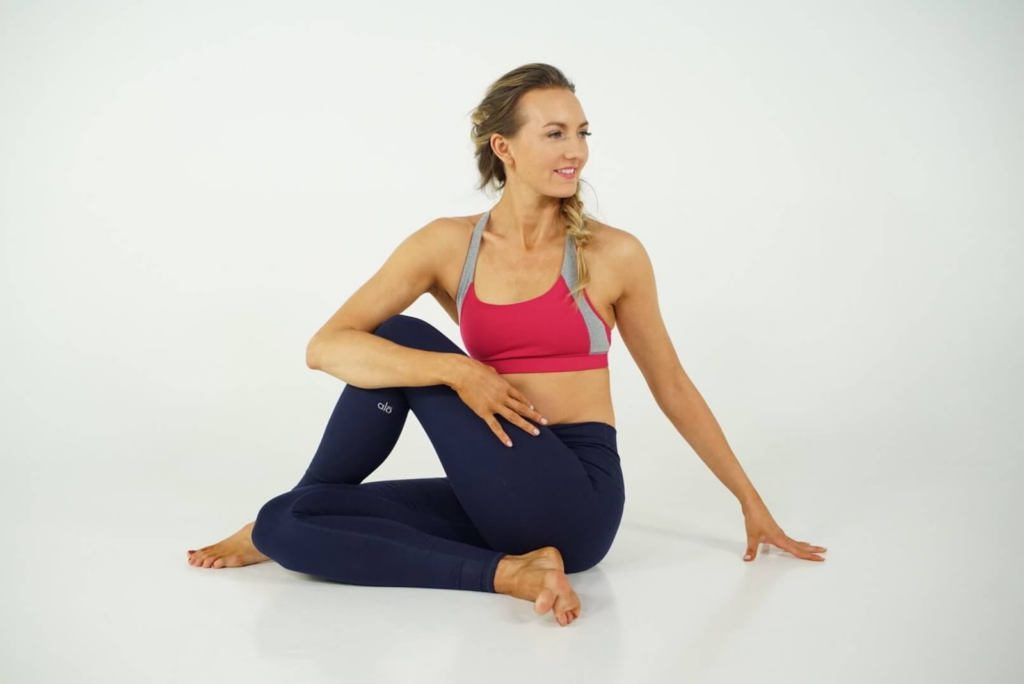
Half Lord of the Fishes Pose, also known as Ardha Matsyendrasana or Seated Spinal Twist, is a seated twisting yoga posture that can help improve flexibility healthy alignment restoring balance in the spine and hips. Here’s how to practice Half Lord of the Fishes Pose to activate the lustrous gem of your Solar Plexus Chakra::
- Begin by sitting on your yoga mat with your legs extended in front of you.
- Bend your right knee and bring your right foot to the outside of your left thigh, placing it flat on the floor.
- Bend your left knee and bring your left foot to the outside of your right hip.
- Place your left hand on the floor behind your back for support.
- Inhale and lengthen your spine.
- Exhale and twist your torso to the right, hooking your right elbow on the outside of your left knee.
- Use your arm to deepen the twist, but avoid pulling or forcing yourself deeper.
- Keep your gaze soft and over your shoulder as you breathe deeply into the twist.
- Hold the pose for several breaths, then release and repeat on the other side.
Yoga Pose 4. Triangle Pose(Trikonasana)

Triangle Pose, also known as Trikonasana, is a standing yoga posture that stretches and strengthens the legs, hips, and spine. Here’s how to practice Triangle Pose:
- Begin by standing at the top of your mat with your feet about hip-width apart.
- Step your left foot back about three to four feet and turn your left foot out to a 90-degree angle.
- Keep your hips facing forward and extend your arms out to the sides at shoulder height.
- Inhale and lengthen your spine.
- Exhale and hinge at your hips, reaching your right arm forward and lowering your right hand to your right shin, ankle, or the floor on the outside of your right foot.
- Lift your left arm up towards the ceiling, keeping both arms in one straight line.
- Gently gaze up towards your left hand.
- Press into your feet, engage your legs and core, and hold the pose for several deep breaths.
- To come out of the pose, inhale and lift your left arm up towards the ceiling, then exhale and come back up to standing.
- Repeat on the other side.
Solar Plexus Chakra Meditation
The Solar Plexus Chakra (Manipura Chakra), is located in the upper abdomen and is associated with personal power, self-confidence, and transformation.
- Find a comfortable seated position either on the floor or in a chair. Make sure your back is straight and your shoulders are relaxed.
- Close your eyes and take a few deep breaths to center yourself and relax.
- Bring your attention to the area around your navel, where the Solar Plexus Chakra is located.
- Visualize a bright yellow light in the center of your abdomen, radiating warmth and energy throughout your body.
- As you exhale, imagine any tension or negative energy leaving your body, making room for positivity and self-confidence.
- Repeat this visualization and focus on your breath for several minutes. When you’re ready, slowly open your eyes and take a moment to ground yourself before continuing with your day to get more positive affirmations
Chanting
Chanting can stimulate the third chakra in several ways. Firstly, the act of chanting involves deep breathing, which can help to calm the mind and body and reduce stress and tension. This can help to balance the Solar Plexus chakra, which can become imbalanced when we are under stress or feeling overwhelmed. Moreover, chanting can help to focus the mind and increase concentration, which can be helpful for those who struggle with self-confidence or willpower. By focusing the mind on the sound of the chant, we can train our attention and strengthen our ability to focus and concentrate.
Seed syllable vibration (bija mantra): Ram (Remember: it’s pronounced like the liquid found in a pina colada LOL)
You can chant the mantra Ram, or try one of these powerhouse affirmations:
- I am strong and courageous.
- My power stems from within.
- I can do anything.
Conclusion
To summarize, the Solar Plexus Chakra, or sanskrit name Manipura chakra, plays a vital role in our sense of personal power, confidence, and emotional well-being. When this chakra is balanced and activated, we are able to live our lives with purpose and vitality, and achieve our goals with clarity and determination. Incorporating yoga poses and other practices to balance and activate the solar plexus chakra can have a positive impact on our physical, emotional, and mental health. By focusing on this important energy center, we can cultivate a greater sense of self-esteem and empowerment, and live our lives with greater purpose and fulfillment. Stay tuned or head to this course in my Uplifted Membership to learn more.
Not sure where to begin?
- Take this quiz to find out!
- Join Uplifted for exclusive chakra content that you can access right from the app.



